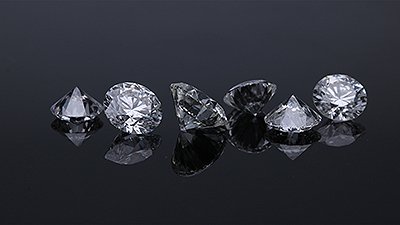
Radioisotope Dating of Rocks in the Grand Canyon
Was Dr. Andrew Snelling “irresponsible” for pointing out dating discrepancies at the Grand Canyon?
Andrew Snelling’s article in the June 2005 issue is irresponsible in that it uses technical jargon that an untrained lay-person would believe to be truth when he (as a Ph.D in Geology) should understand the fact that different radioisotope systems behave differently during different geologic processes. The worst system to use is K-Ar in a rock that has been metamorphosed. Ar is a noble gas that resides weakly in the crystal latice of minerals. It has been shown many times that it is easy to lose Argon during metamorphism or subsequent disturbances and occasionally there is excess Argon that gives spuriously older ages for rocks. Rb-Sr is another method that is difficult to interpret when there is evidence of thermal events. These elements have been shown to be mobile (acting as an open system) during tectonic events. These are just two examples of the problems....there are many more!
Regardless, all the ages reported are rather old. I don’t think you can compare different systems that have independent decay constants to prove that it is a flawed system, and you can’t use this to prove that constants have accelerated over time.
Please try to explain the behavior of the individual isotope systems in the future. Also, if you asked any geochronologist interested in dating the crystallization age of the Precambrian rocks in the Grand Canyon, not a single one would even consider using the K-Ar system.
C.H.
USA
There is nothing irresponsible with my article in Creation, volume 27, number 3, 2005, on the radioisotope dating of rocks in Grand Canyon (pages 44–49). The article reported that there were problems with the different radioisotope systems in obtaining the true age of these metamorphosed basalts in the Precambrian crystalline basement of the Grand Canyon. How can it be irresponsible for me to be showing exactly what C.H. has admitted, namely, “the fact that different radioisotope systems behave differently during different geologic processes.” I found it rather interesting that C.H. claimed that “all the ages reported are rather old,” when in fact most of the ages reported in the article are younger than the true “age” claimed for these rocks in the relevant geologic literature. All the problems with the different radioisotope systems C.H. has highlighted have already been extensively reported in my chapter in the first volume of the Radioisotopes and the Age of the Earth (RATE) project published in 2000 and referenced in the Creation article, and yes, all these problems are reported in the standard textbooks in geochronology. The article was designed to corroborate these problems, and it did. And I agree with C.H. that none of these radioisotope systems are reliable in dating these rocks, which was the conclusion of the article.
Greetings,
My wife and I had the pleasure of hearing Ken Ham speak several times at the Indiana Homeschool Convention a couple of weekends ago and later in the week hearing Mike Riddle in Fort Wayne. Thank you so much for all that you do! We were staying with a couple in Indianapolis for the convention, and as we were talking my wife’s cousin’s husband stated that he saw no conflict between creation and evolution. Because of your organization I was able to talk to him intelligently and then refered him to your website for more in-depth information. Just a couplke of years ago I would have just sat there and listened to him without knowing what to say. What a difference!
Oh well, it looks like the evolutionists have the upper hand on you now, though. As you are aware, they just found another missing link in the Arctic. :) As soon as I read the article on Fox News I checked out your website and, sure enough, you already had a response. I don’t know whether to laugh at or cry for these people. Thanks again for your wisdom!
Steve
USA
There was no irresponsibility in using technical jargon when the article was labeled “semi-technical”. Besides, if technical jargon wasn’t used others would accuse us of misleading people by not using the correct terminology! How can it be irresponsible to provide copious footnotes and side boxes that are well referenced so that people reading the article would know the statements made in it are backed by fuller explanations and documentation that they can consult if they want or need to?
Any comparison of the different radioisotope systems “to prove” that the constants have accelerated over time was only tangential to the article. Besides, “proof” is never claimed in the article. But the demonstrated inconsistencies between the different radioisotope systems is evidence consistent with accelerated radioactive decay, just as there are many other lines of evidence well referenced in the article that are consistent with the same possibility.
It is clear that C.H. has unfortunately not read the available scientific literature on dating of the crystalline Precambrian rocks in the Grand Canyon, because he would find there geochronologists have attempted to date some of the Precambrian crystalline rocks using the K-Ar system. Indeed, several of the references in the article document those attempts. One of those attempts is highlighted in a forthcoming article in the inaugural edition of Answers magazine, which will again demonstrate how the radioisotope systems are flawed and thus unable to yield reliable ages for Grand Canyon crystalline rocks. C.H. has only confirmed what we already knew: that there are many problems in trying to use the different radioisotope systems to date rocks!
Recommended Resources

Answers in Genesis is an apologetics ministry, dedicated to helping Christians defend their faith and proclaim the good news of Jesus Christ.
- Customer Service 800.778.3390
- Available Monday–Friday | 9 AM–5 PM ET
- © 2025 Answers in Genesis




